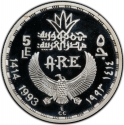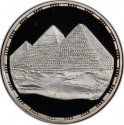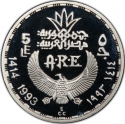You are about to finish your registration. Please check your mailbox (including spam folder). There should be a letter with a confirmation link. Check setting to make sure that your e-mail address is correct.
Send letter againDescription
The Luxor Temple (Arabic: معبد الأقصر) is a large Ancient Egyptian temple complex located on the east bank of the Nile River in the city today known as Luxor (ancient Thebes) and was constructed approximately 1400 BC. In the Egyptian language it was known as ipet resyt, "the southern sanctuary". It was one of the two primary temples on the east bank, the other being Karnak. Unlike the other temples in Thebes, Luxor temple is not dedicated to a cult god or a deified version of the pharaoh in death. Instead, Luxor temple is dedicated to the rejuvenation of kingship; it may have been where many of the pharaohs of Egypt were crowned in reality or conceptually (as in the case of Alexander the Great, who claimed he was crowned at Luxor but may never have traveled south of Memphis, near modern Cairo).
To the rear of the temple are chapels built by Amenhotep III of the 18th Dynasty, and Alexander. Other parts of the temple were built by Tutankhamun and Ramesses II. During the Roman era, the temple and its surroundings were a legionary fortress and the home of the Roman government in the area. During the Roman period a chapel inside the Luxor Temple originally dedicated to the goddess Mut was transformed into a Tetrarchy cult chapel and later into a church.
Along with the other archeological sites in Thebes, the Luxor Temple was inscribed on the UNESCO World Heritage List in 1979.
Obverse

|
Depicts Rameses II’s court, filled with papyrus bud columns and colossal statues. Between the columns on the southern end of the court, Rameses II placed colossal statues of himself beside the pharaoh Amenhotep III, who was responsible for building the rest of the temple. |
|---|---|
Reverse

|
Stylized state name (Arab Republic of Egypt) divides denomination in Arabic and English and abbreviation of state name (A.R.E.) below, the date in Arabic (Hijri) and Western (Georgian) divides by a vulture with open wings. Engraver's initials (ECC) below. 5 ٥ جمهورية مصر العربية |
| Edge |







